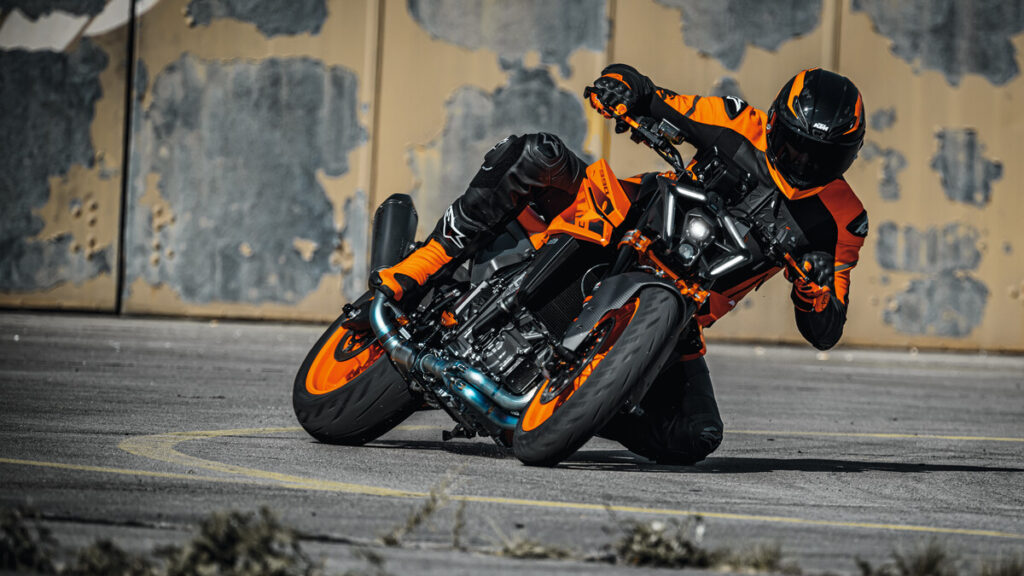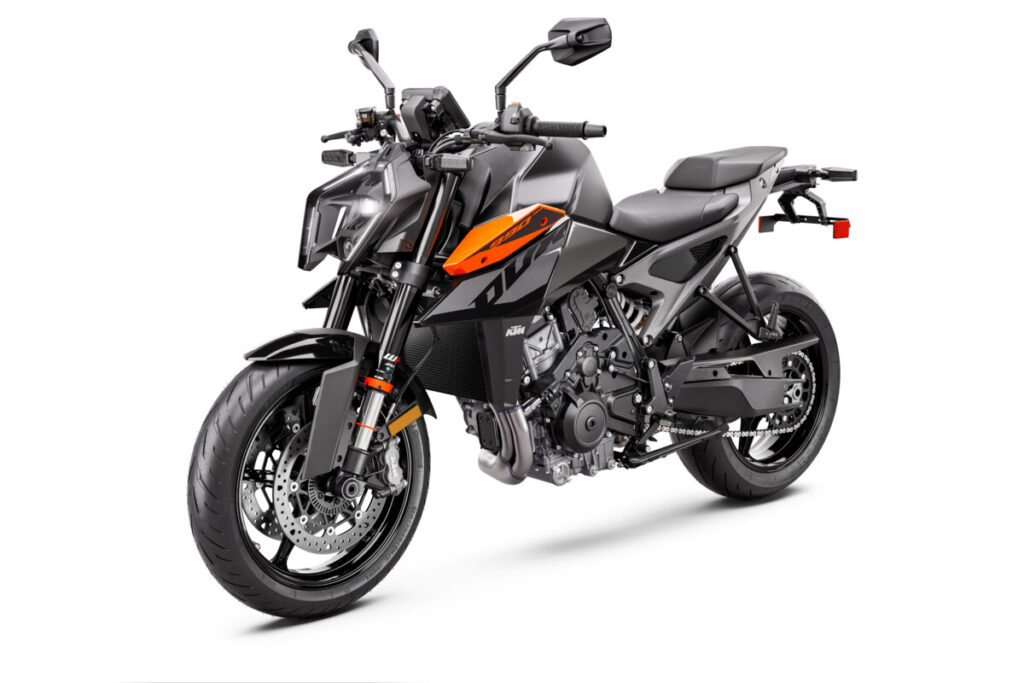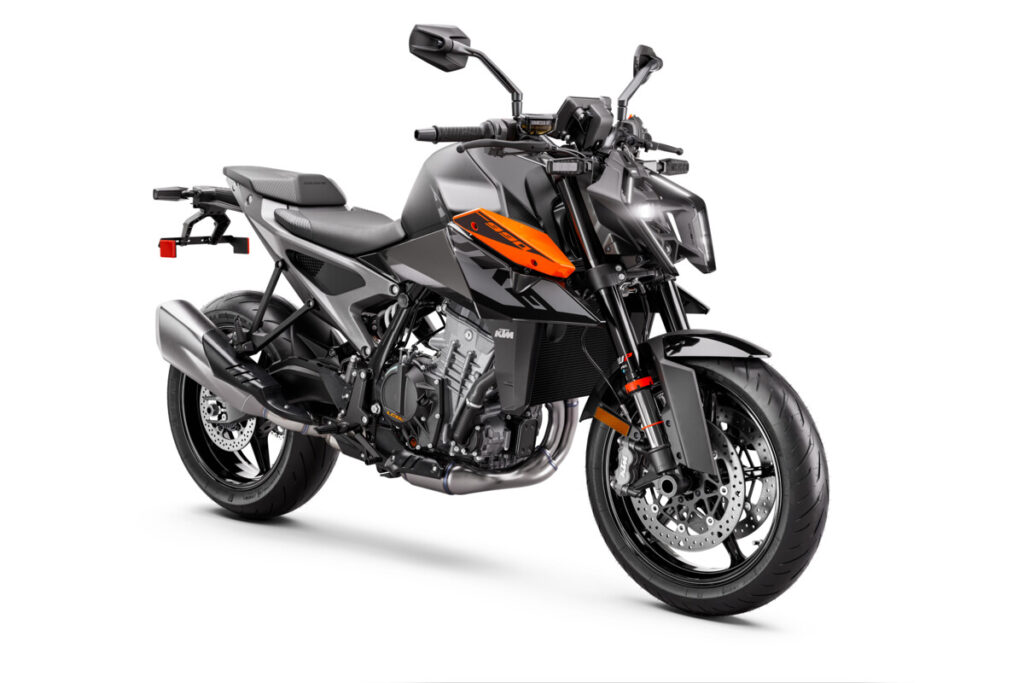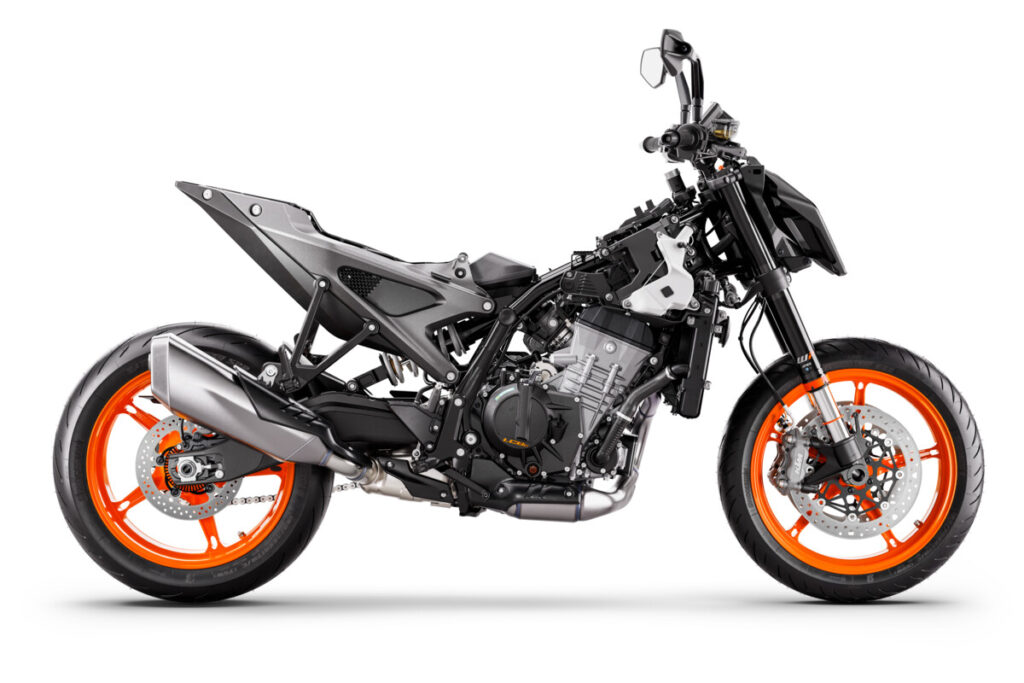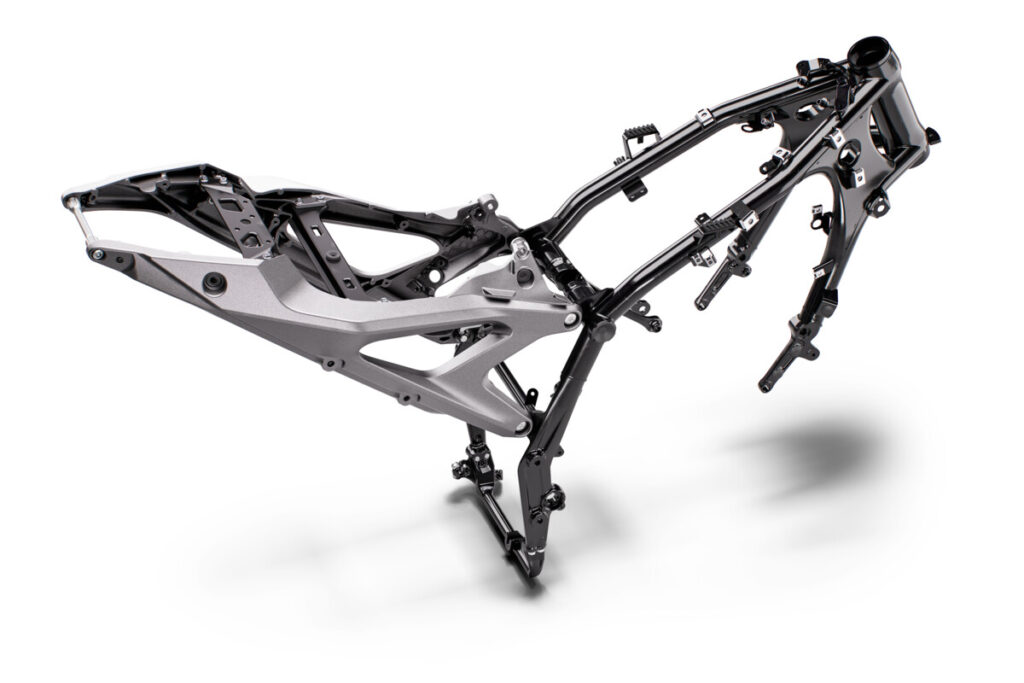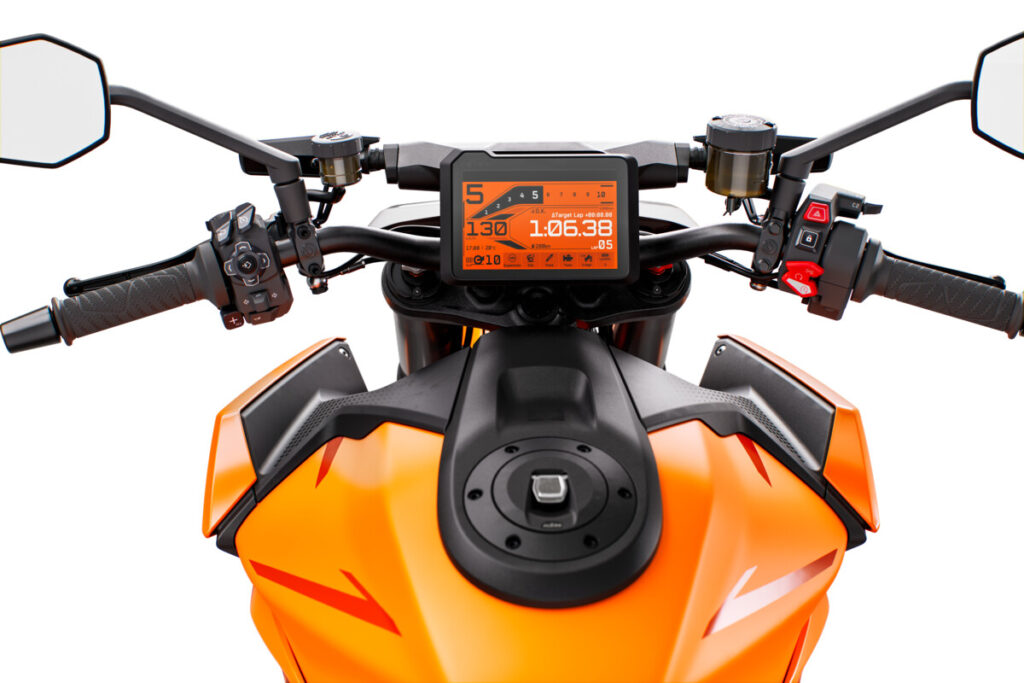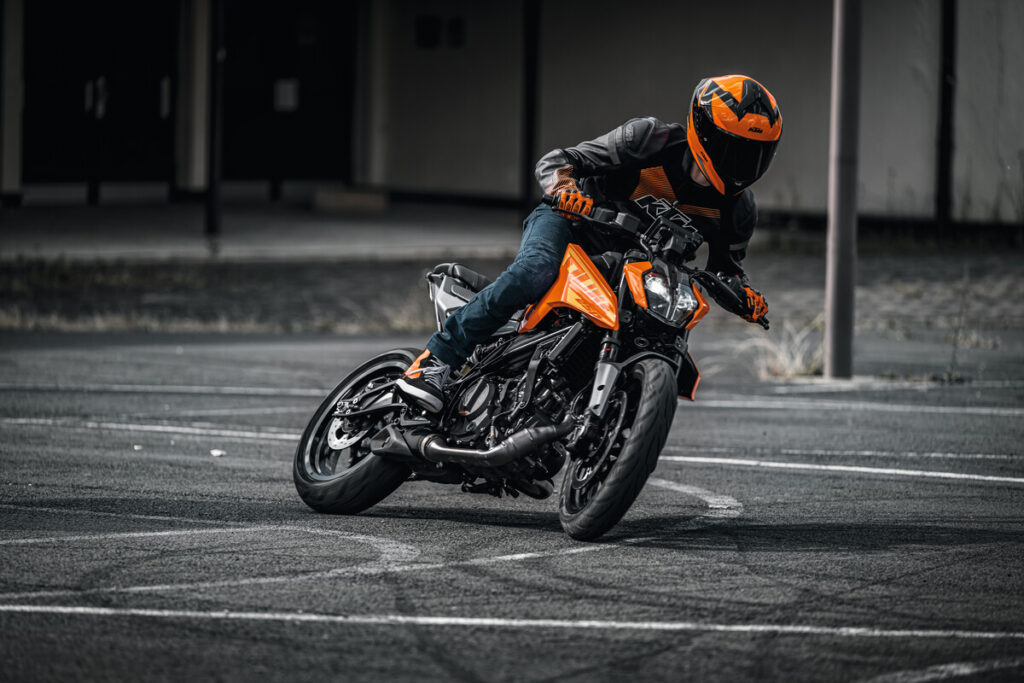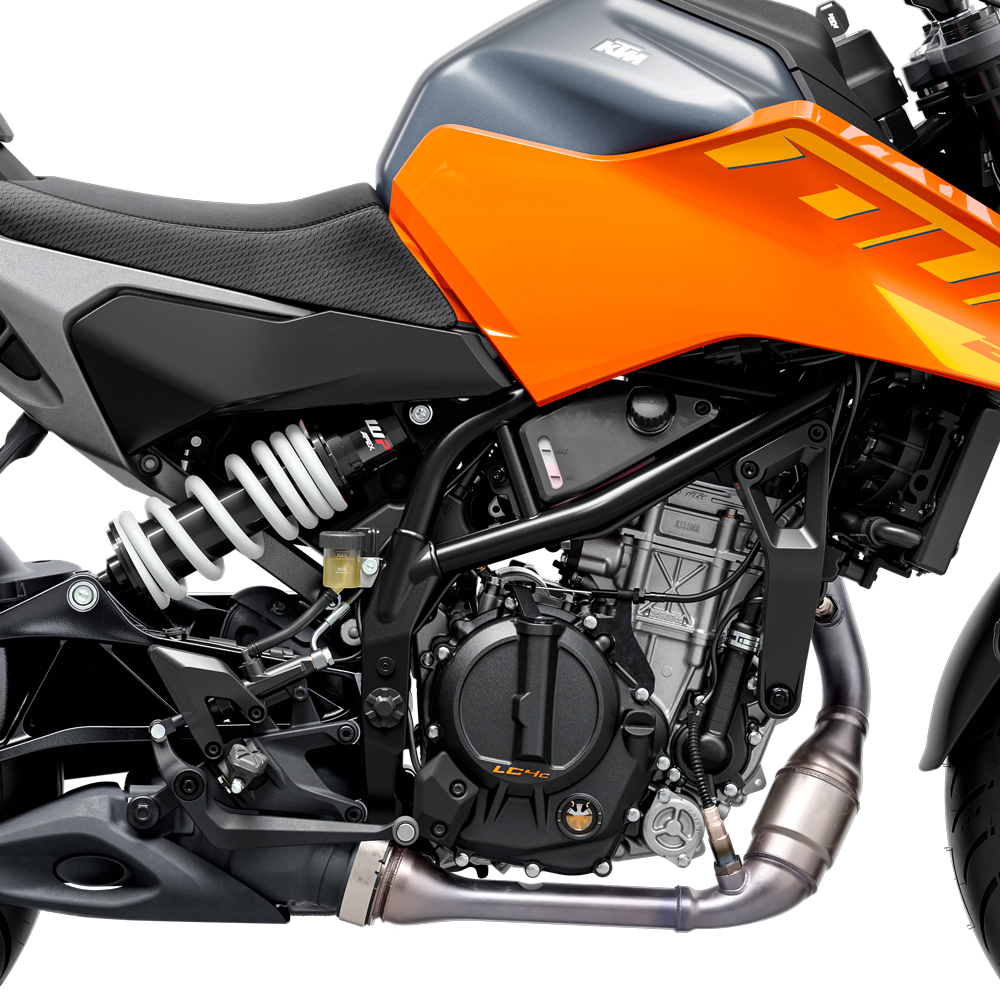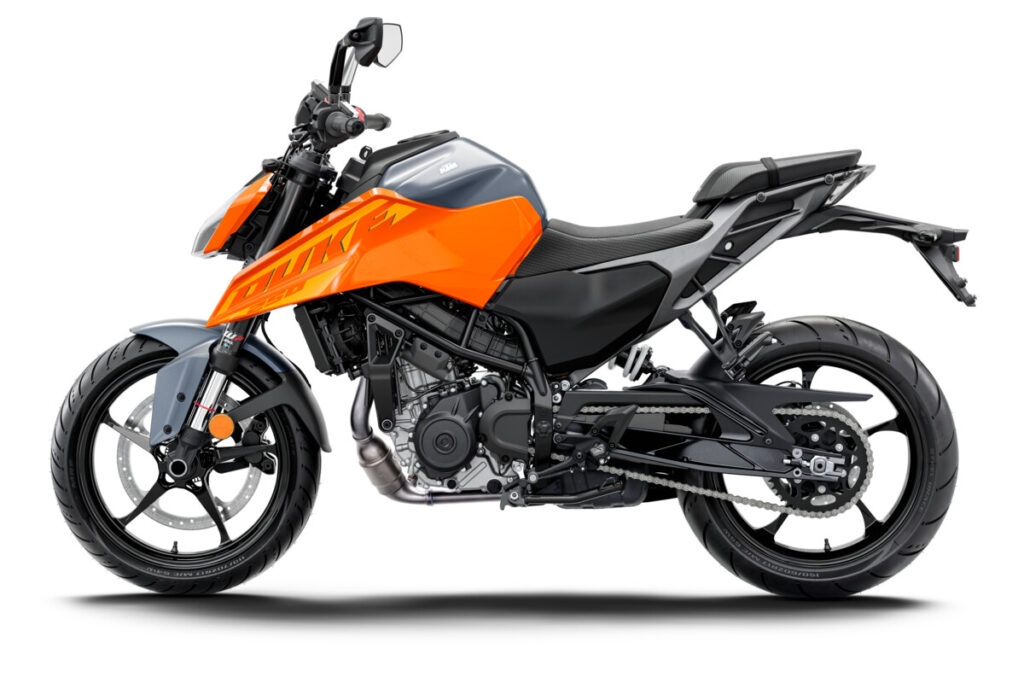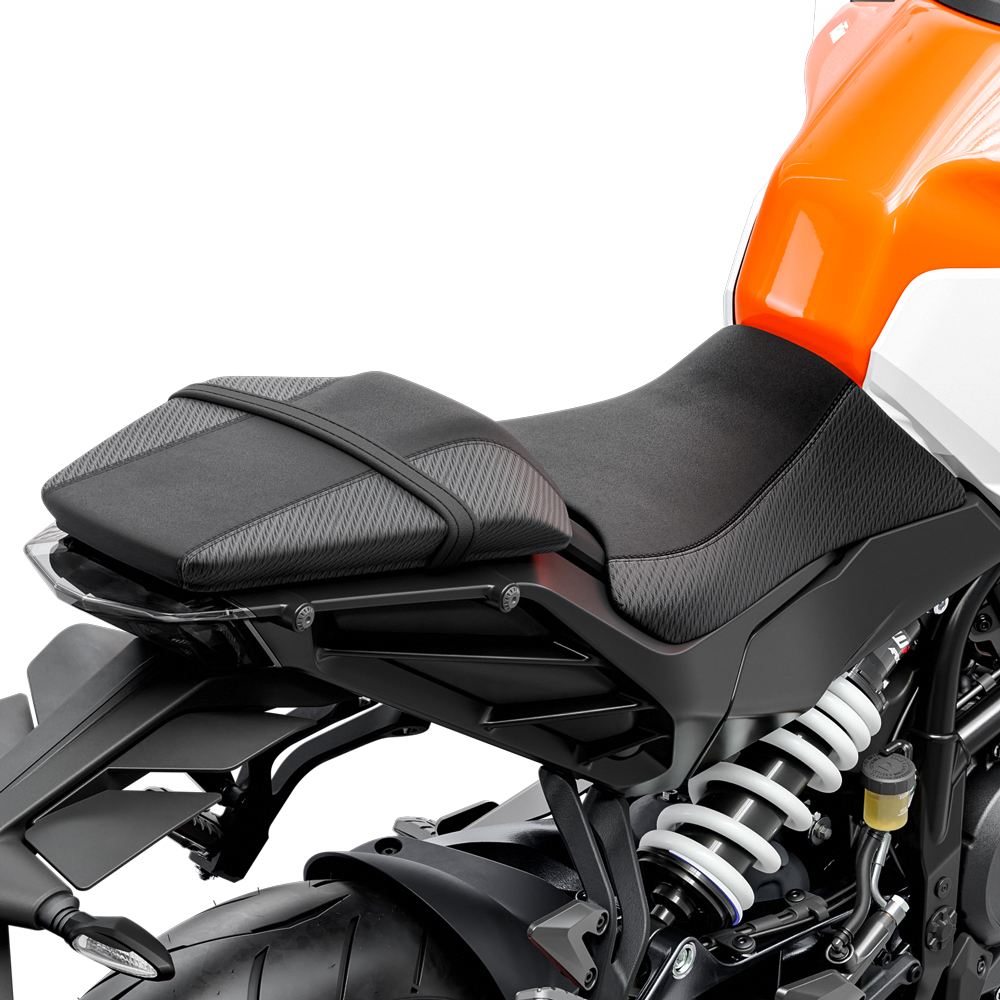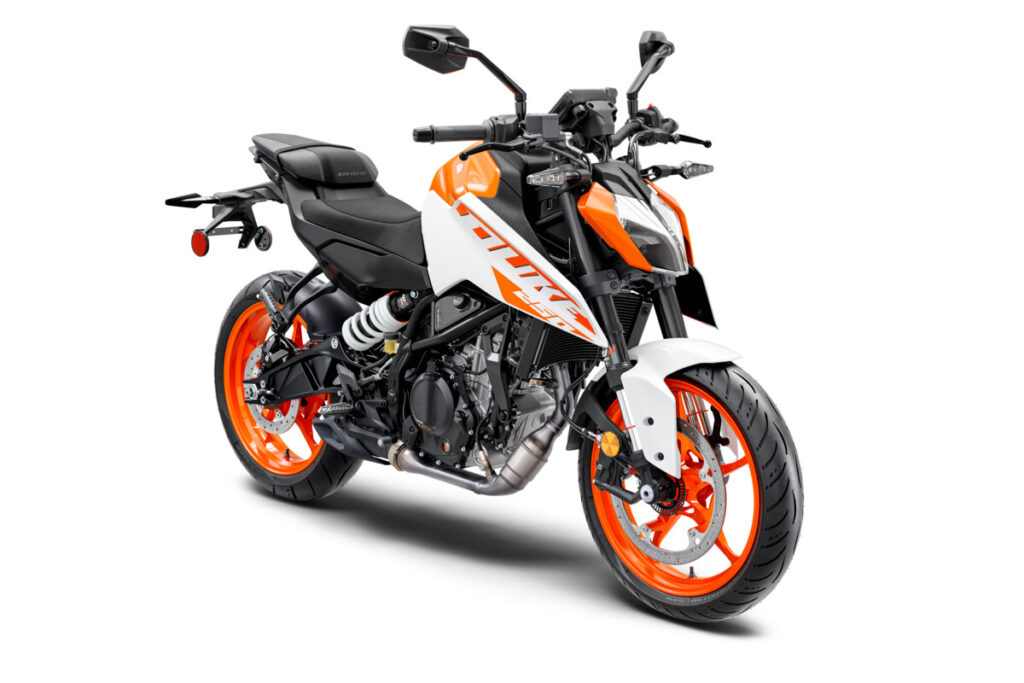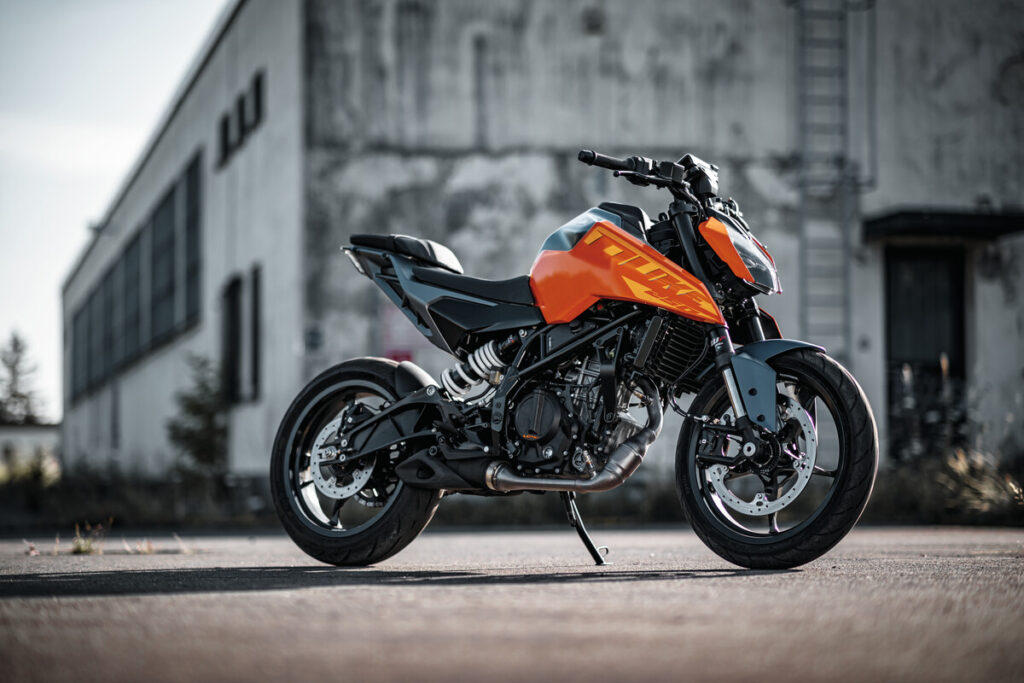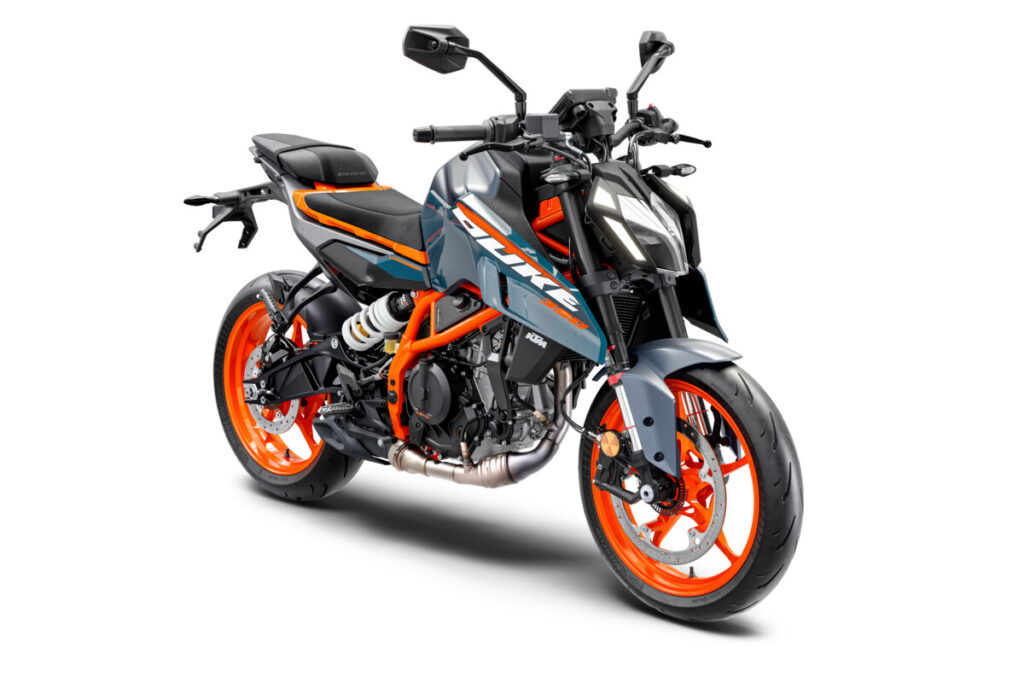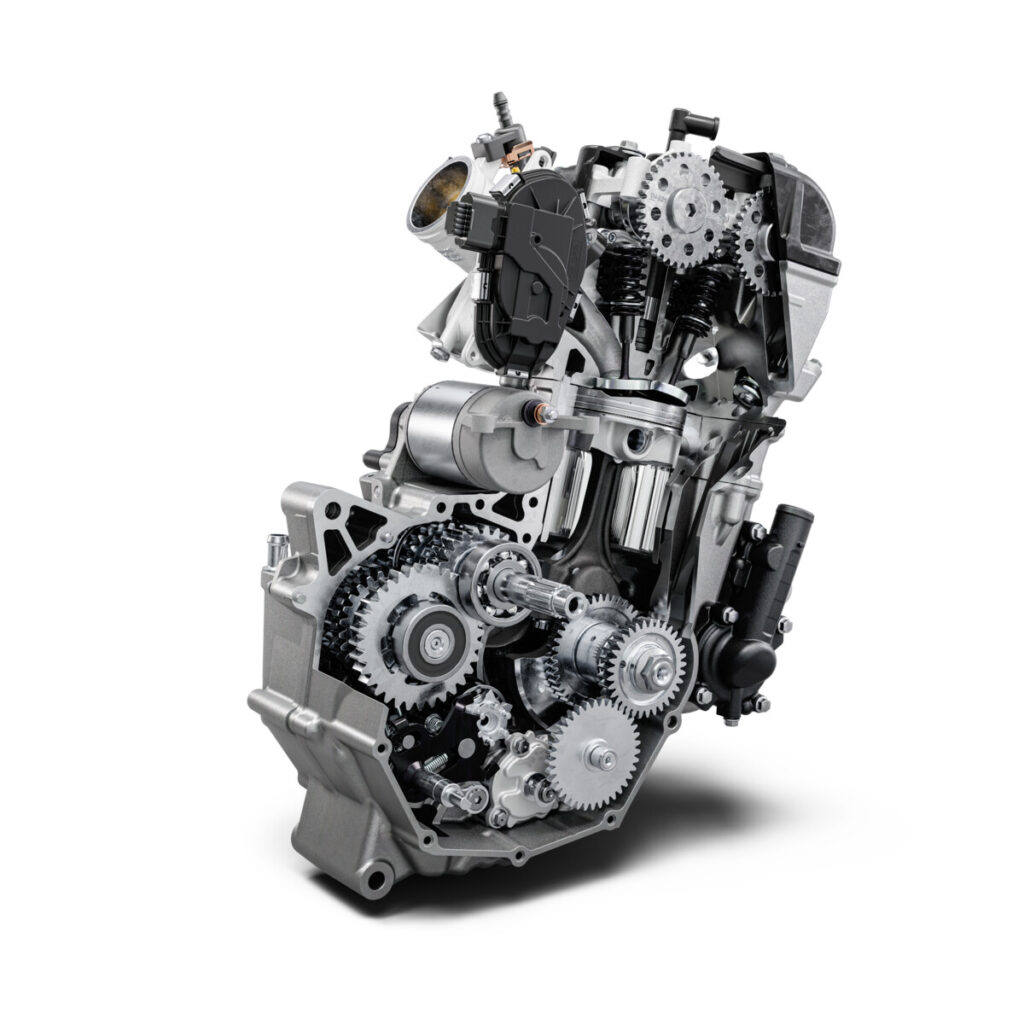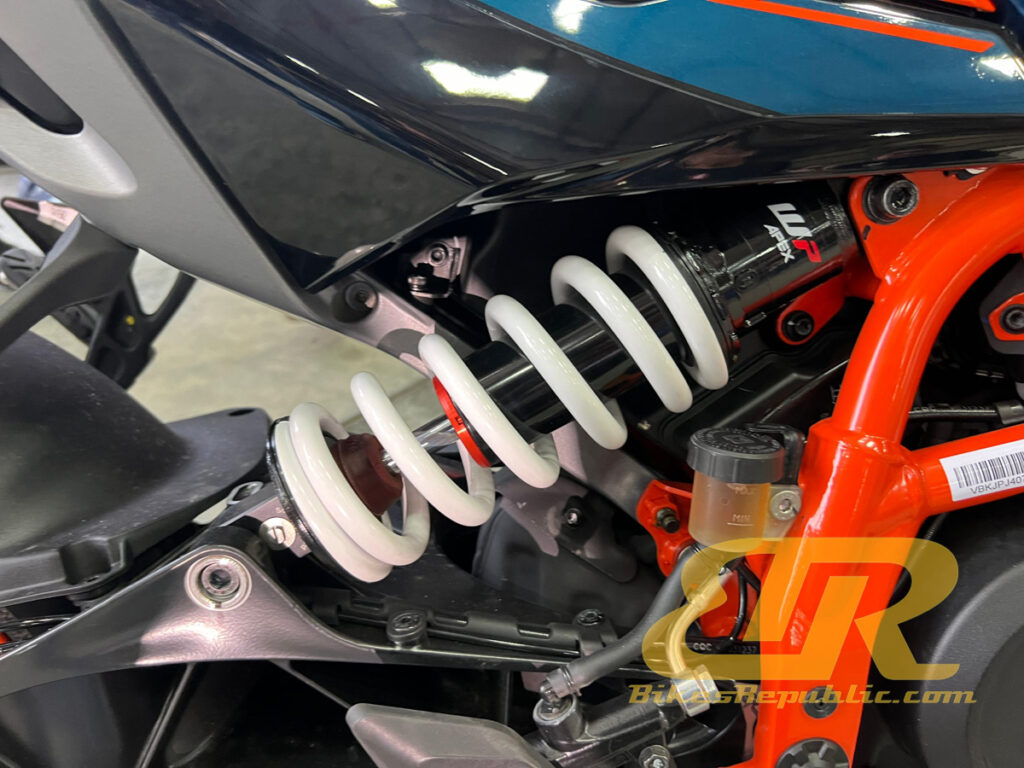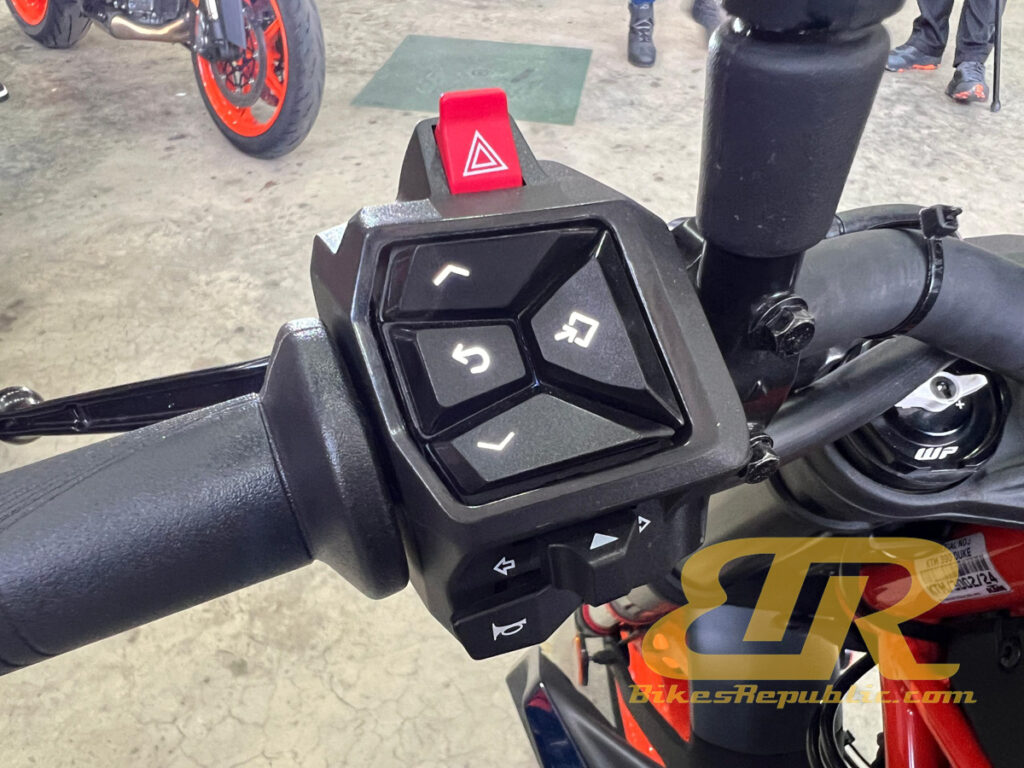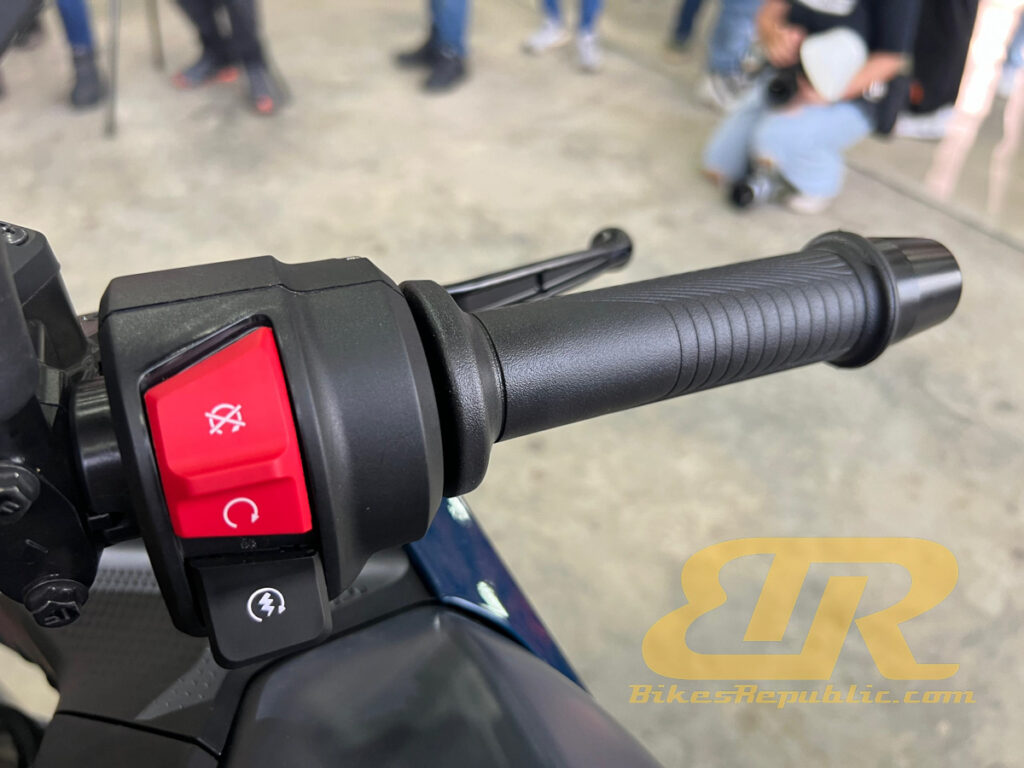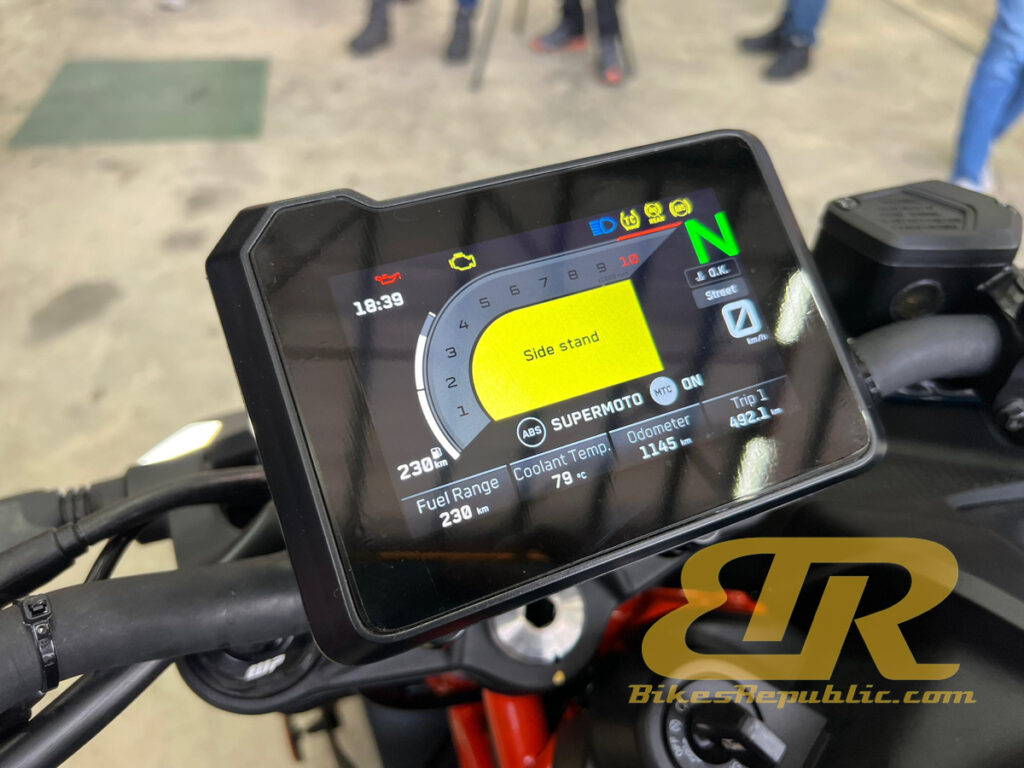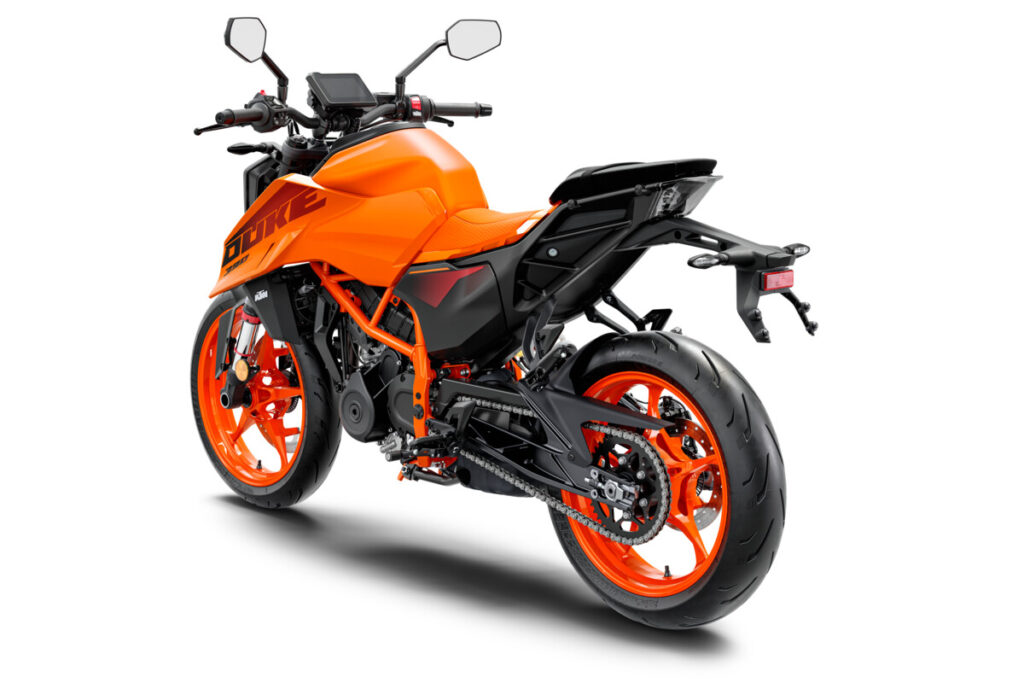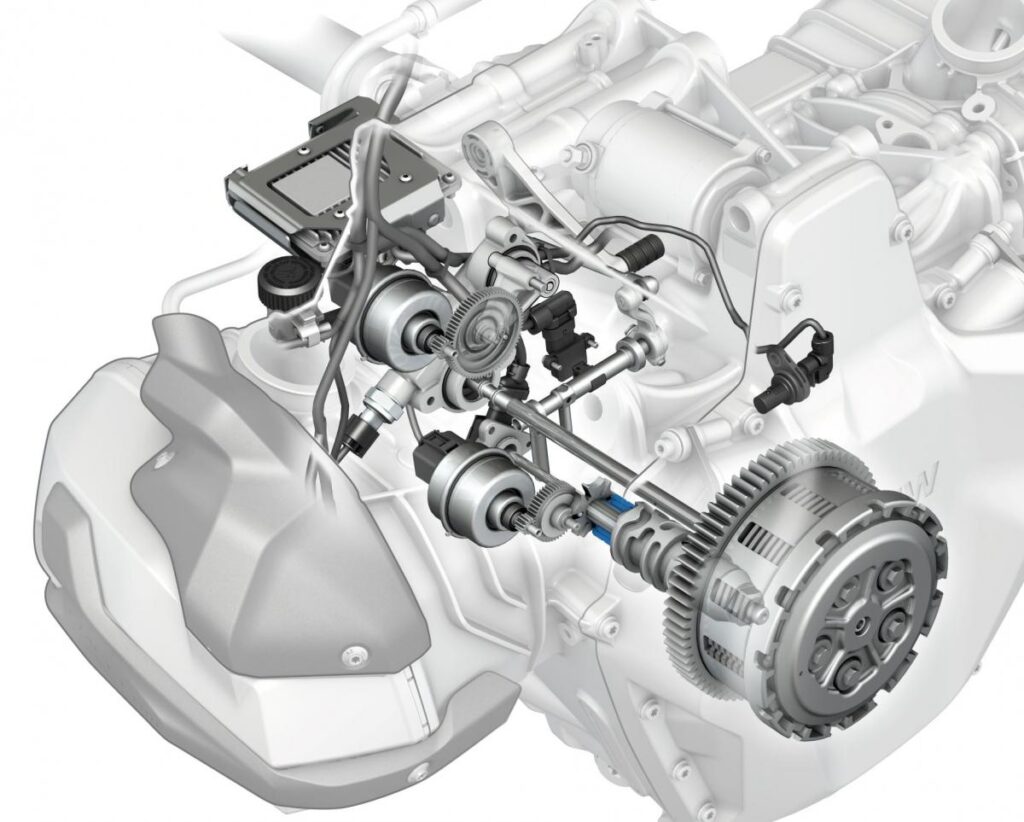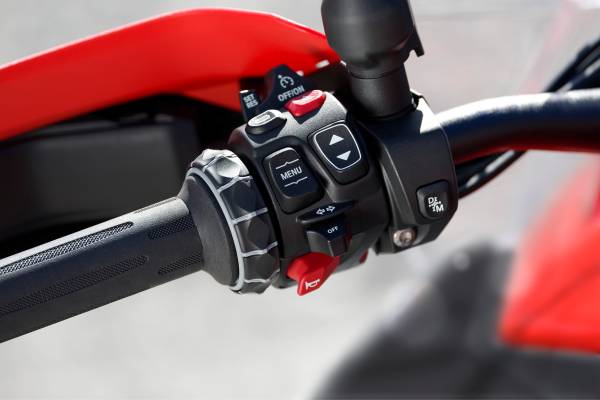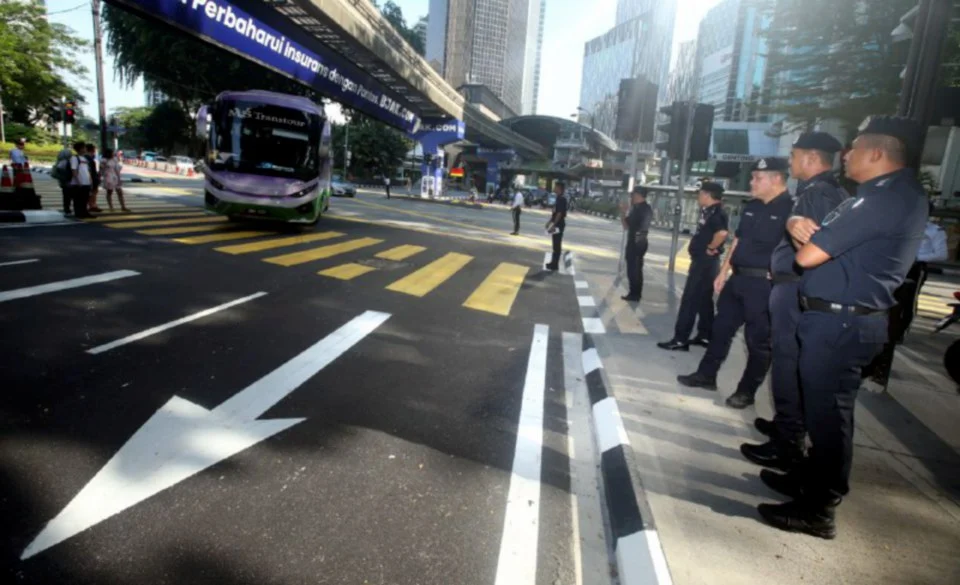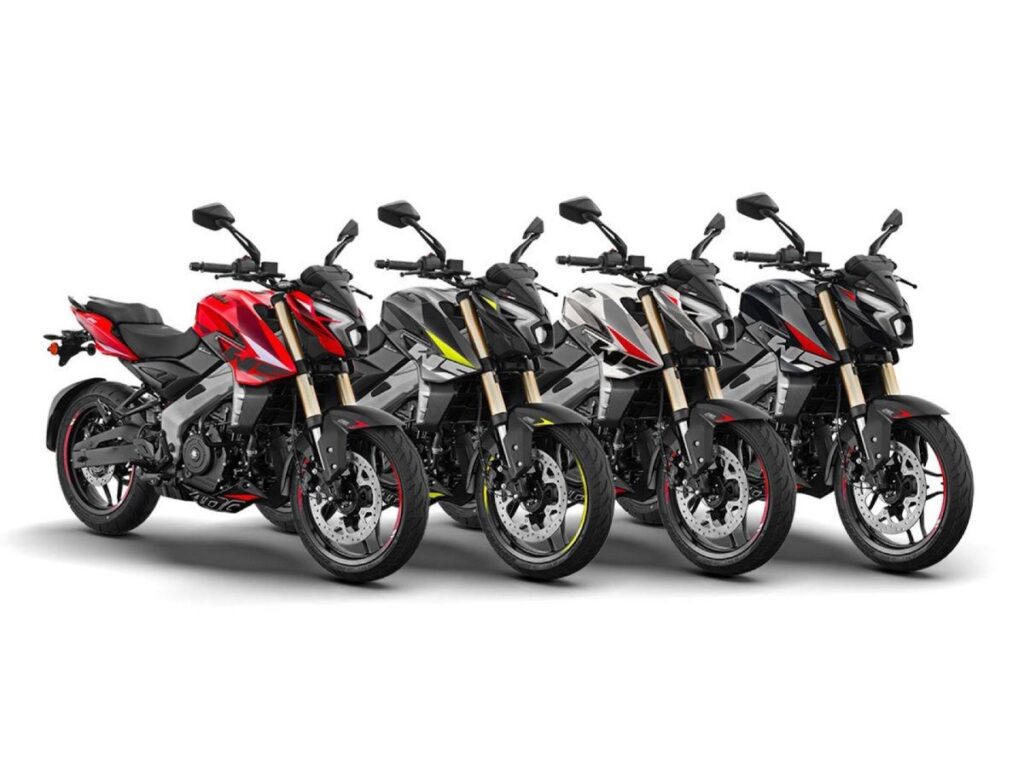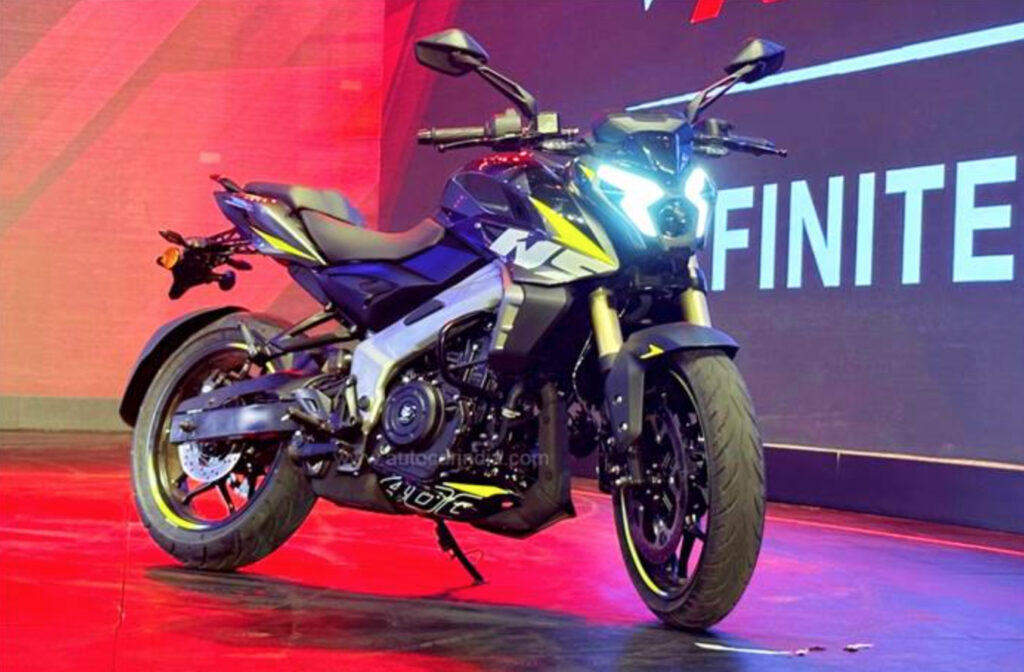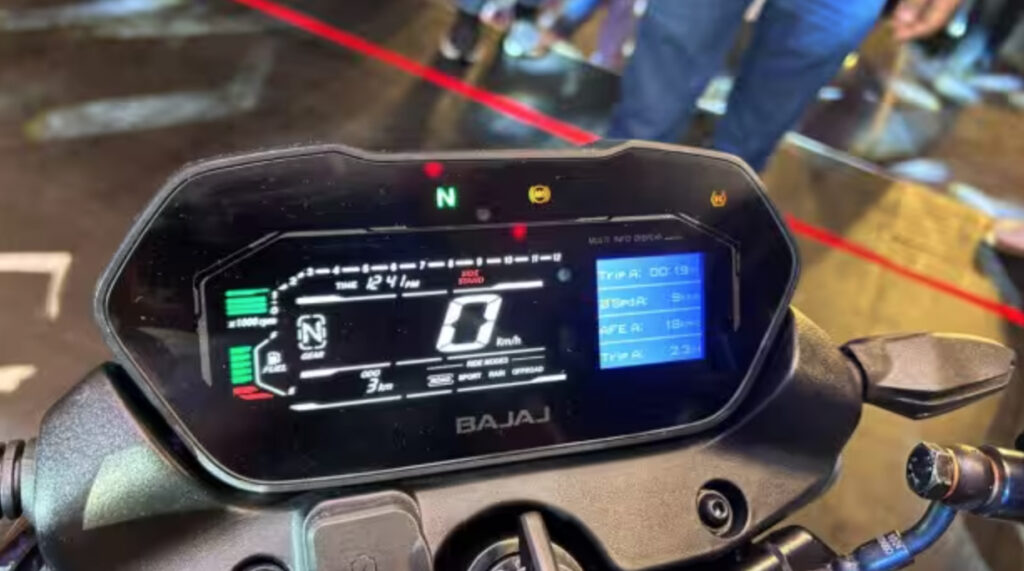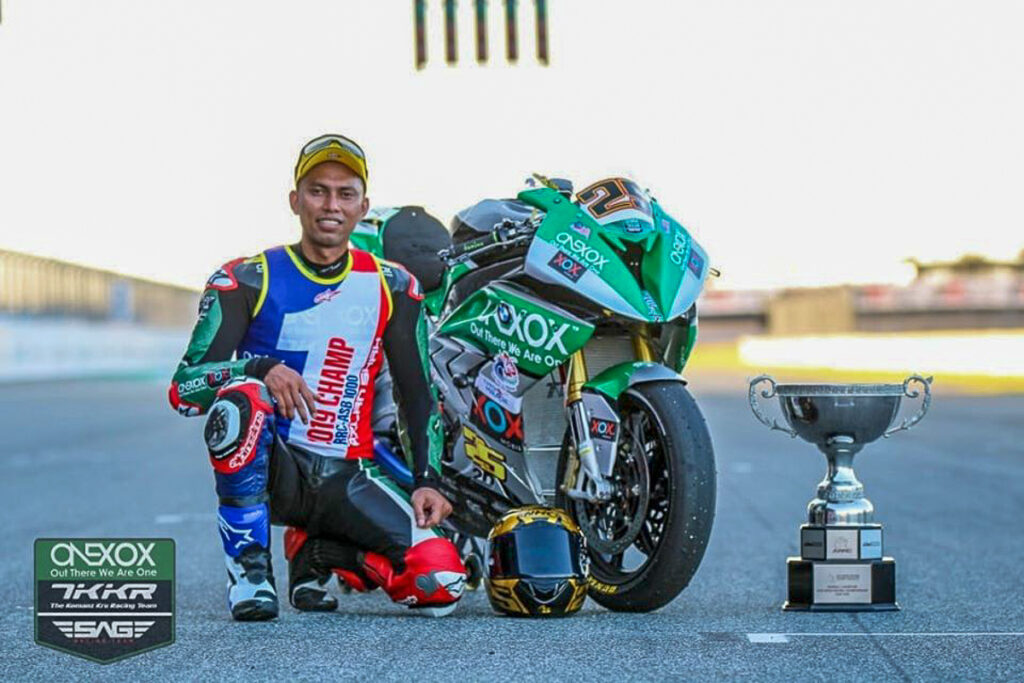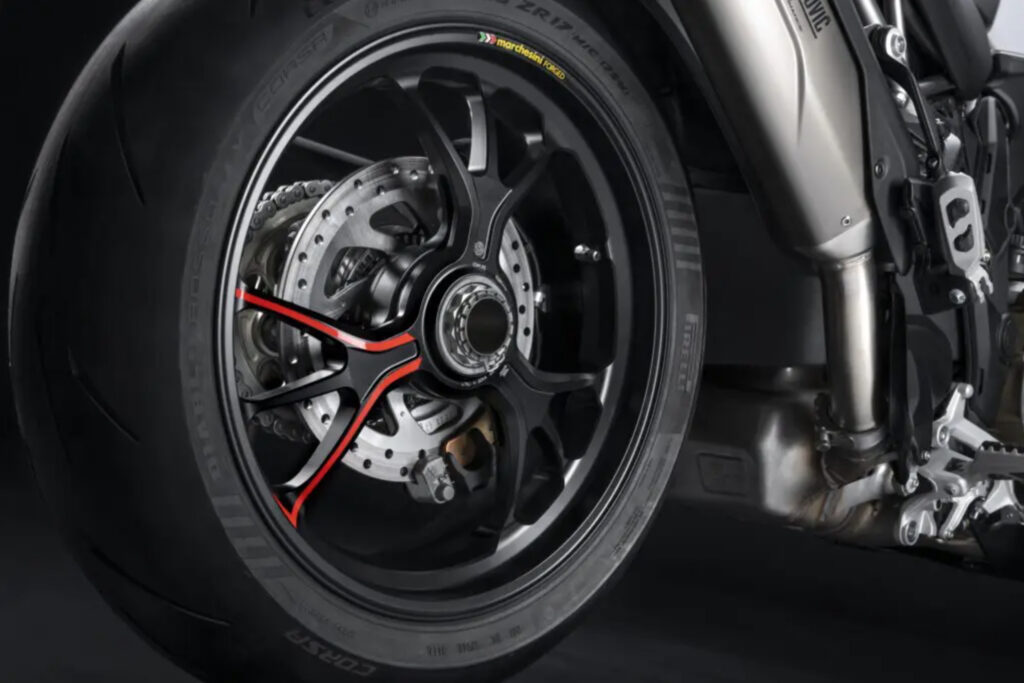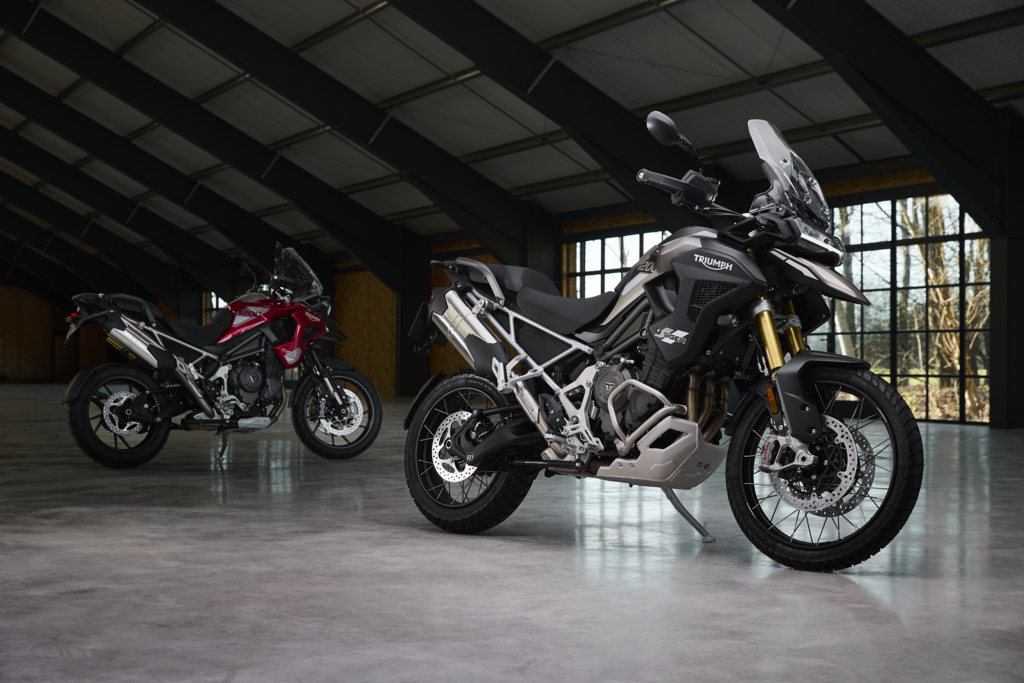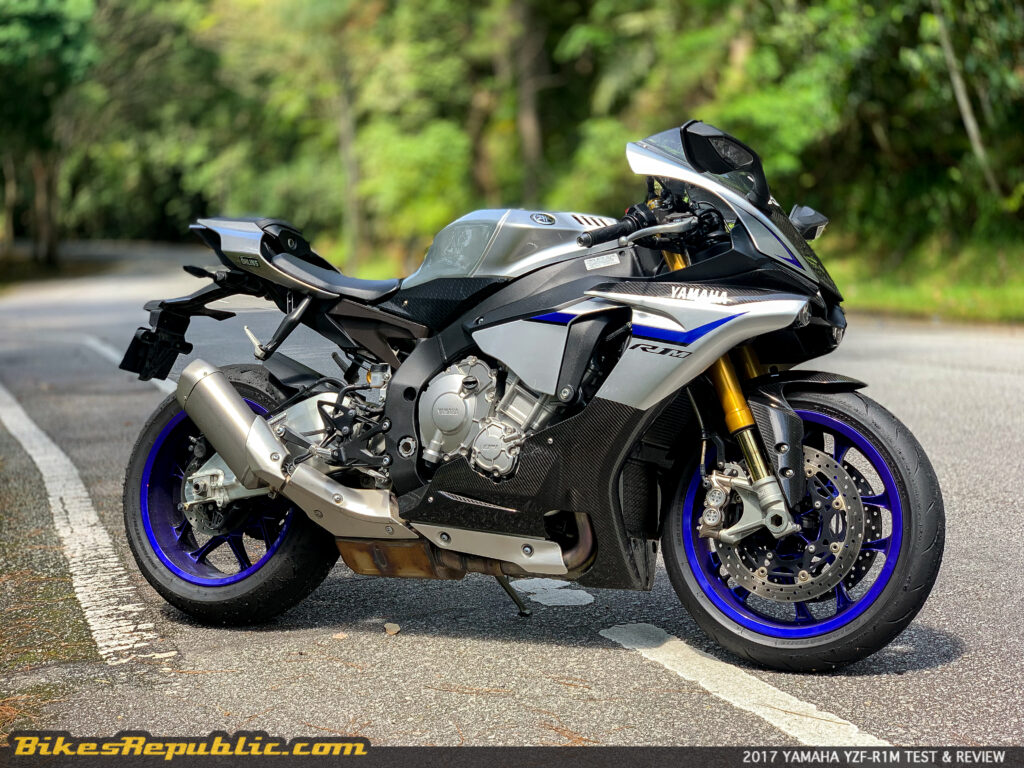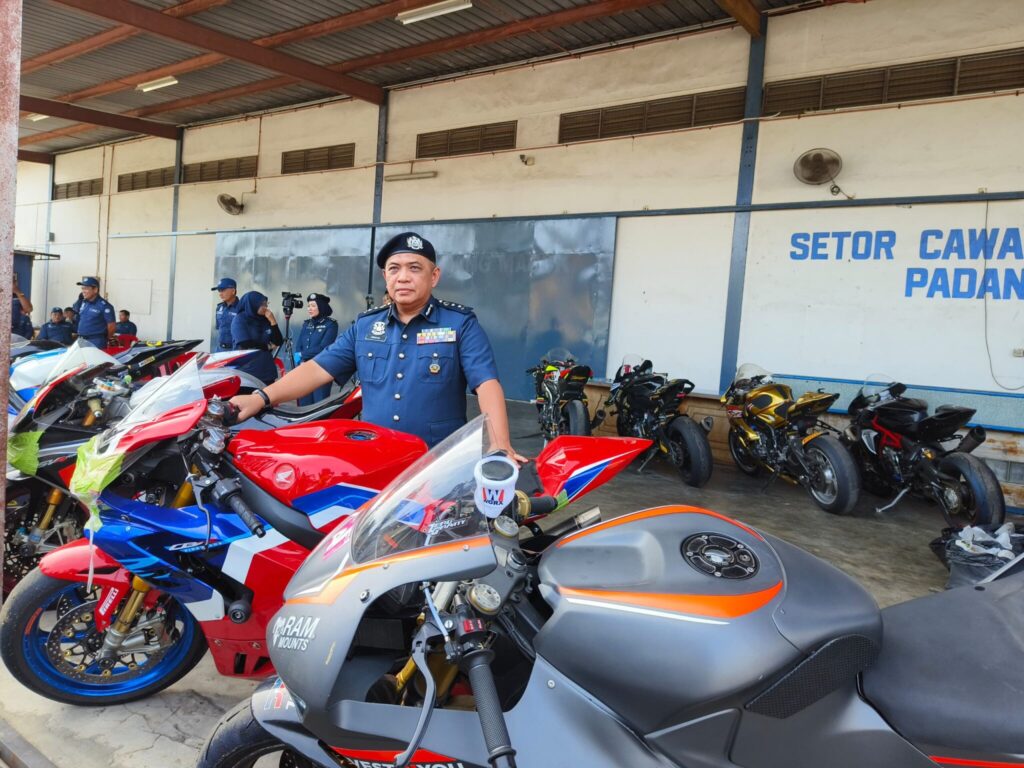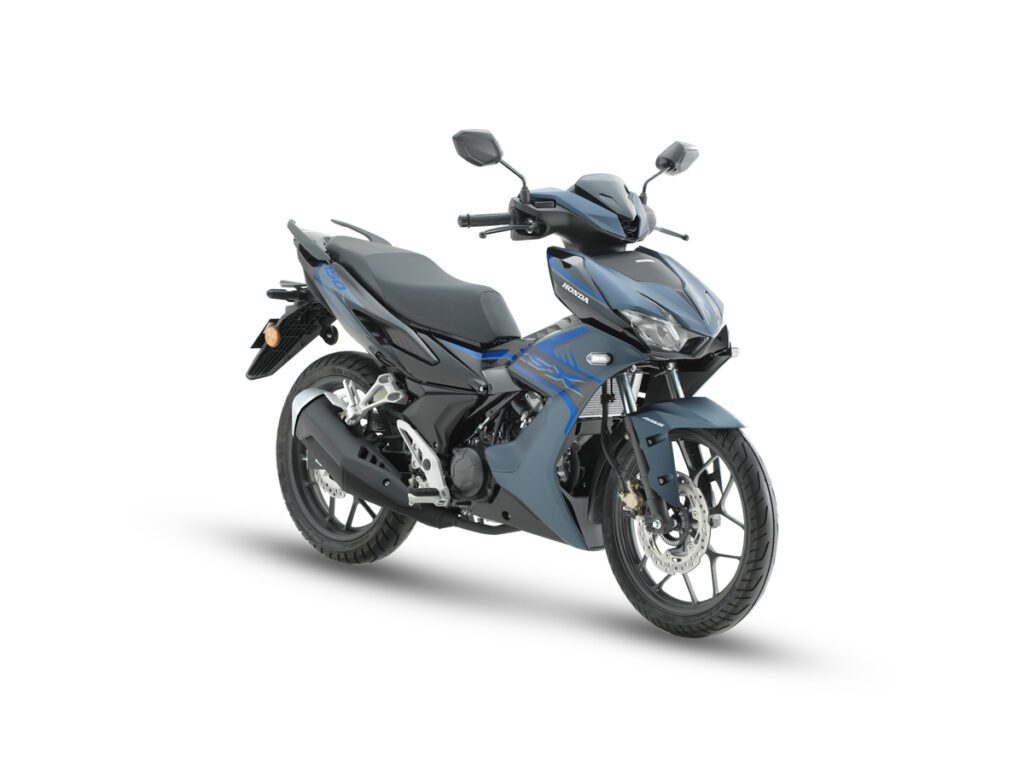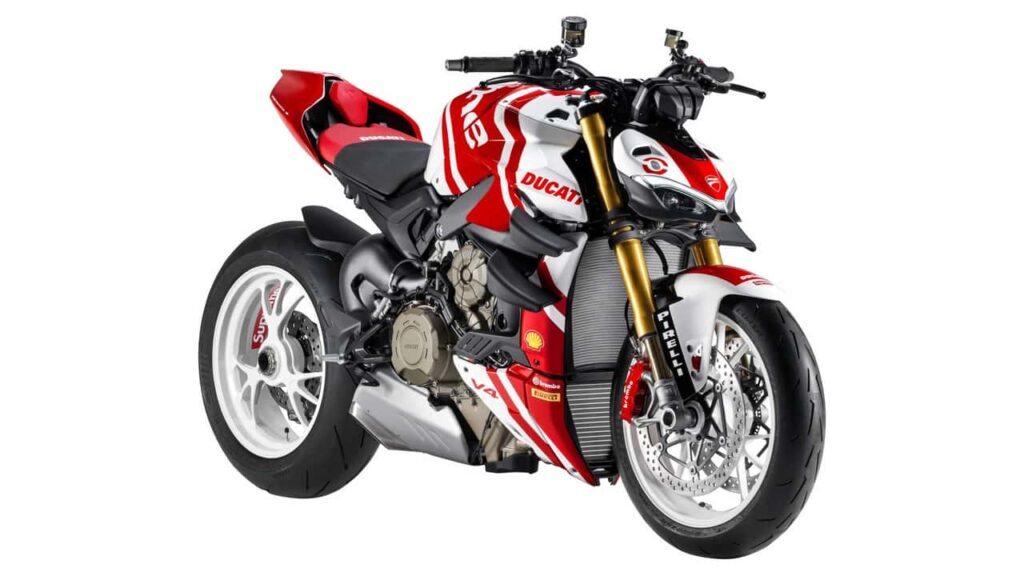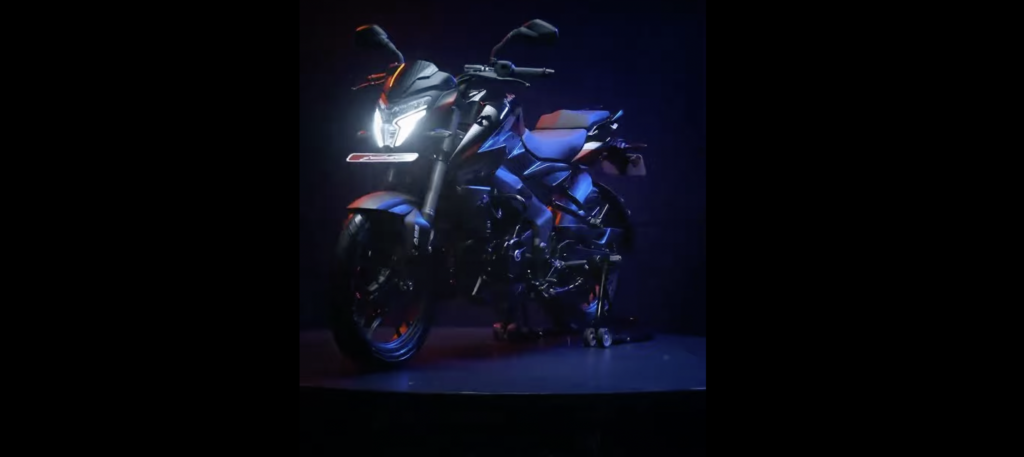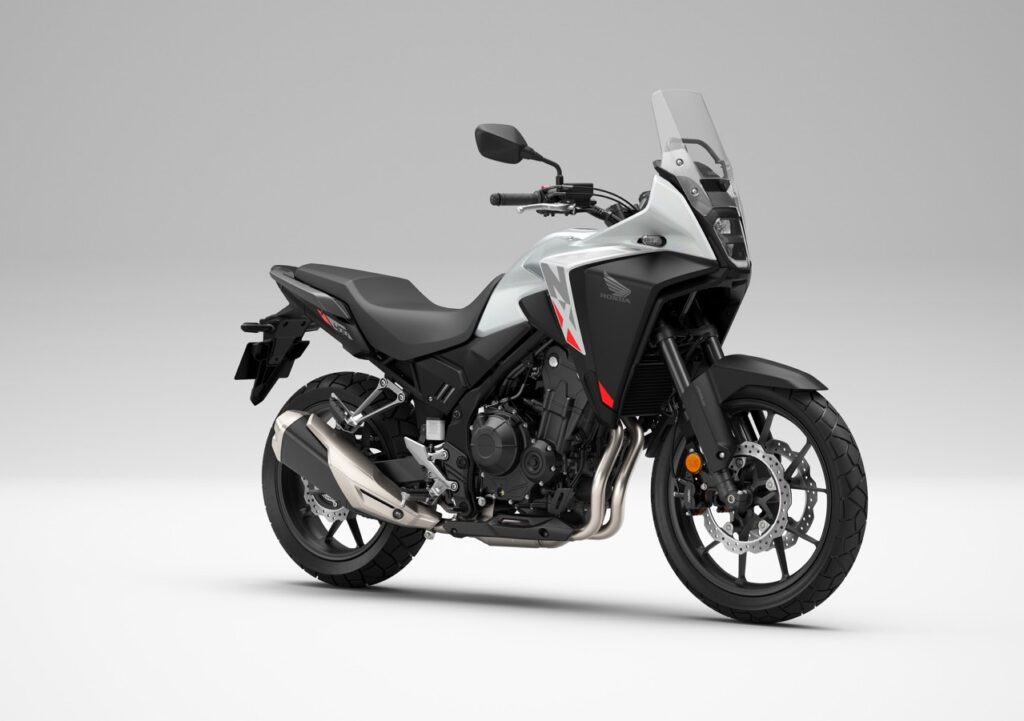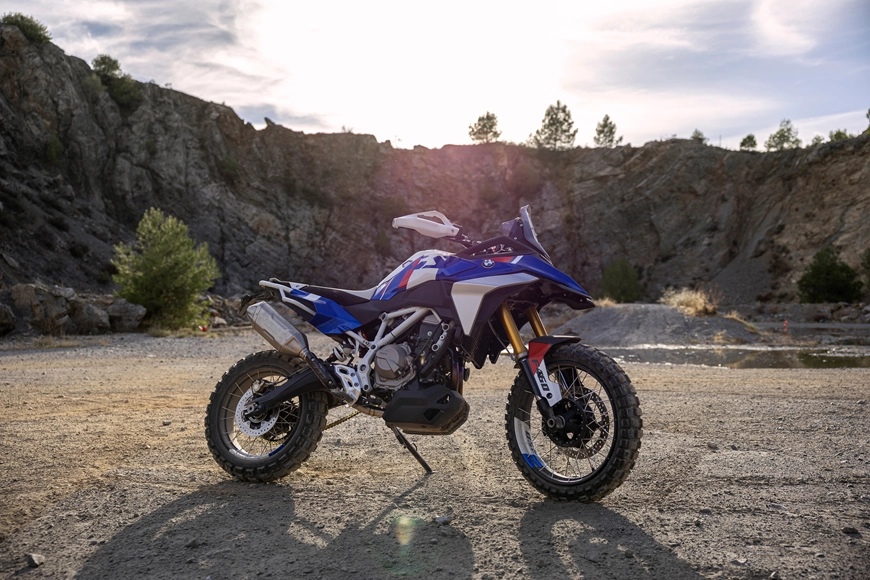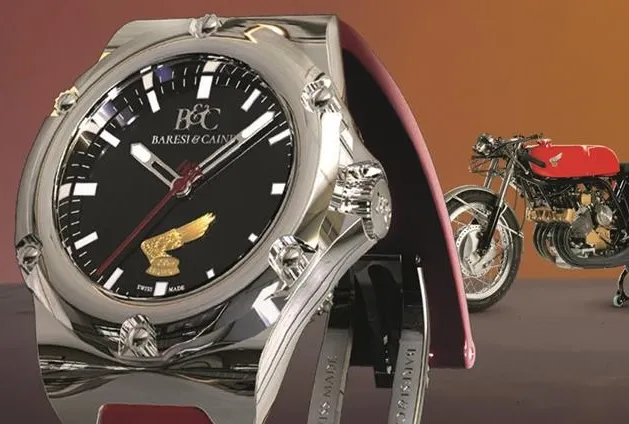More Team Orange news: The much awaited 2024 KTM 990 Duke has arrived in Malaysia.
The “990 Duke” name is hallowed among long-time KTM fans, as it was the previous edition that unleashed KTM’s propensity for making bonkers naked bikes, paving the way for the beastly 1290 Super Duke.
So, although the 990 shares some of the underpinnings of the midrange Dukes, it is much closer to the big boss 1390 Duke.
Highlights of the 2024 KTM 990 Duke
- The most eye-catching feature is the new styling, of course, which we admit splits opinion.
- That light cluster is functional, nonetheless: The headlights adjust automatically to ambient lighting, flanked by DRLs.
- The engine is the now-ubiquitous LC8c parallel-twin much like the ones on the 790 Duke and 890 Duke R.
- However, the 990’s 947cc LC8c features new pistons, connecting rods, and crankshaft, plus more aggressive cam profiles.
- Coupled to a new exhaust system, the engine does 123 hp at 9,500 RPM and 103 Nm of torque at 6,750 RPM.
- That power is sent through a six-speed transmission and the usual PASC clutch.
- The powerplant is housed in a new steel trellis frame, while the subframe is aluminium and bolted-on.
- Suspension is what else but WP, since the brand is owned by KTM. Up front are WP Apex 43 mm diameter upside-down forks with five levels of compression and rebound adjustments.
- At the back is a WP Apex Monotube monoshock with a lighter spring, 10 levels of preload, and 5 levels of rebound damping adjustments.
- The front brake system consists of dual 300mm lightweight discs, serviced by four-piston calipers.
- The rear brake has a two-piston caliper and 240mm disc.
- Cornering ABS is standard, of course, utilising the Bosch 9.3 MP system.
- As usual, a ride-by-wire throttle enables riding aids, such as three traction control and three ride modes, while TRACK and PERFORMANCE modes are optional.
- TRACK mode, as the name suggests allow for the rider to control levels of rider aid, besides activating launch control.
- PERFORMANCE adds cruise control and Bluetooth connectivity.
- There is a new 5-inch TFT-LCD screen.
- KTM claims the bike weighs a lithe 179 kg wet, with 14.8 litres of fuel.
The 2024 KTM 990 Duke is priced from RM 99,800.



